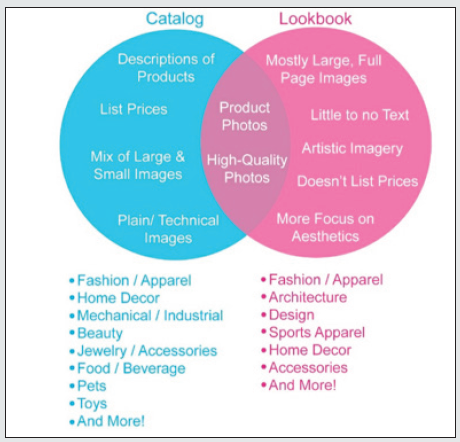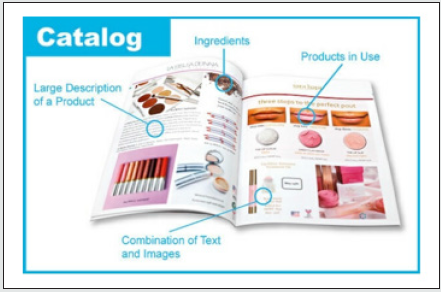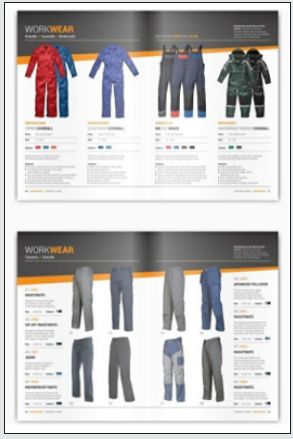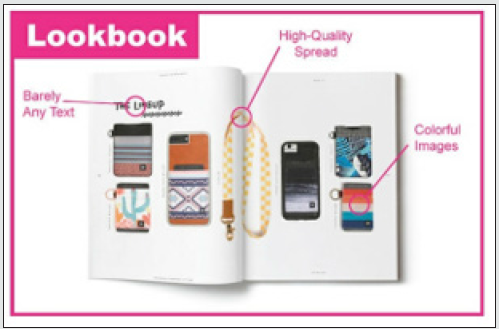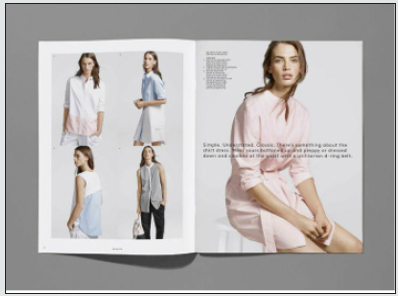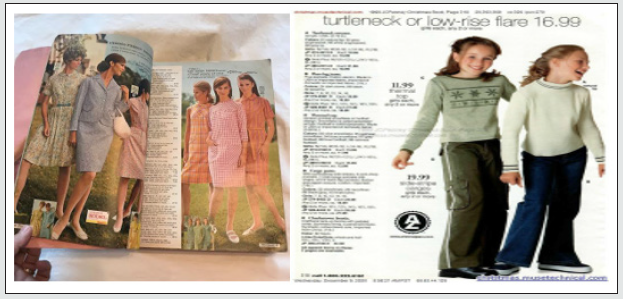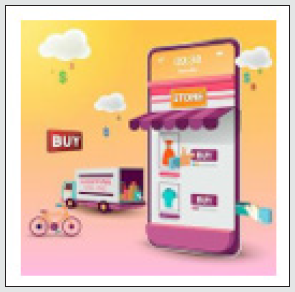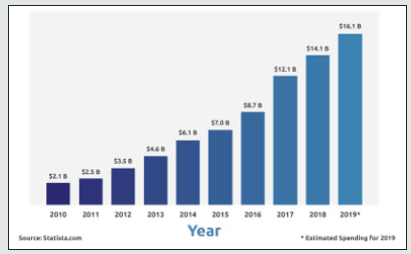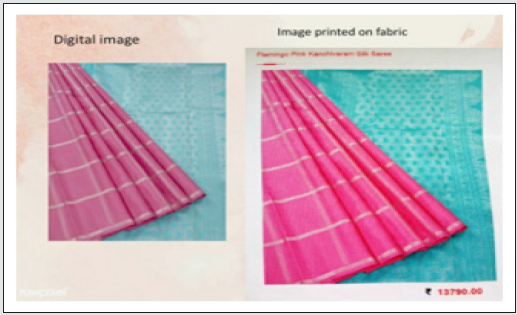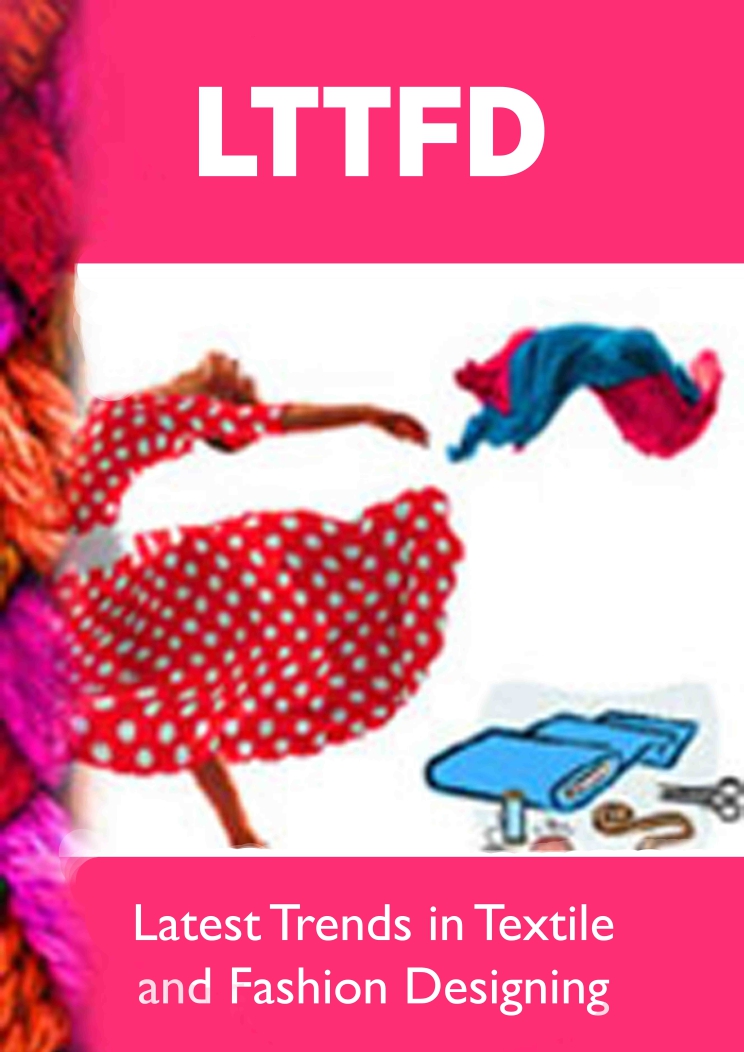
Lupine Publishers Group
Lupine Publishers
Menu
ISSN: 2637-4595
Review Article(ISSN: 2637-4595) 
Innovative Trends in Catalogues and Look books Used in the Fashion Industry Volume 4 - Issue 1
Kavitha S1*, Priyadharshini P2, Sri Akshaya JS2 and Selvanayagam S2
- 1Assistant Professor III, Department of Fashion Technology, Kumaraguru College of Technology, India
- 2B Tech Scholars, Department of Fashion Technology, Kumaraguru College of Technology, India
Received: May 17, 2021 Published: June 01, 2021
*Corresponding author: Kavitha S, Department of Fashion Technology, Kumaraguru College of Technology, Coimbatore, India
DOI: 10.32474/LTTFD.2021.04.000179
Abstract
A fashion catalogue displays a clothing brand’s collection and used for wholesale and purchasing needs. It is essential for manufacturers, designers, and retailers to include all the necessary details like pricing, sizing, materials, and measurements. Look books are as a visual guide to a brand and have been an important part of the marketing strategy for many years. Through look books, designers show potential buyers how their clothes should be worn and to get an overall feel of the collection. Before the digital age, look books used to be physical books that fashion brands would have printed to showcase their latest collections Today, most look books are digital and live on a brand’s website. They are more creative or interactive. As the recent fashion world has embraced direct-to-consumer eCommerce, there is not as much need to distribute look books to third-party retailers. Instead, many smart eCommerce brands are using look books to appeal directly to customers through their website, mobile app, social media, and/or email marketing. This paper discusses about innovations in catalogues and look books which can be a powerful marketing tool for eCommerce fashion and accessories brands.
Keywords: Catalogue; fabric; inkjet printing; book; fashion
Introduction
A fashion catalogue has all the details about the products of a particular brand. To convey the latest collection to the customers in a marketable light is its main purpose. A catalogue delivers the essence of the brand. It helps to list products on shipping sites, marketplaces, comparison sites, and more channels. It supports marketing and retargeting campaigns to add product information [1]. It informs customers across every touchpoint. For the brand, a catalogue is an excellent source of marketing, it gains the audience a story, it is the easiest way to reach the target market, it declares the lifestyle of the brand and improves its identity. For the customer, Catalogues serves as a source of information, it plays a major role in the selection and buying process, it acts as a style guide where a look as a whole (from head to bottom) is being presented [2]. A good catalogue is a great investment. Catalogues help inspire consumers by creating awareness about the brand and introducing new ideas. They are most successful when they are used as part of multi-channel marketing strategy so that it can drive customers to e-commerce sites to make them buy/purchase. Since the beginning of mankind, people have been engaged through stories, and content marketing, it is all about telling stories to the customers to attract and retain them. In addition to educating people about the products, catalogue allow using of stories and pictures to require readers on a journey. In the end, all marketing tools have one particular issue: Do they produce results? With catalogues, it is possible. In addition, catalogue mail dates, customer and source codes, and other targeted criteria make catalogue performance easy to track [3]. They serve as a central and material part of many businesses. According to the American Catalogue Mailers Association, over 90 million people depend upon the catalogue to form their purchase (Figure 1).
Requirements for Catalogue
a) Know about Brand
It is important to view the catalogue as a marketing tool. In this sense, the catalogue should first and foremost convey the brand and/or the company values. A catalogue must be unique to a store as it benefits both the customer and the brand, it should not be made in a way like it can belong to any other store. The catalogue should be of very good quality. It should be made creative, having the capacity to attract customers. Customers always look for something different and if that starts with a catalogue it can surely help lift the sales of a store [4].
b) Produce visually appealing product images
Product photographs are one of the most important aspects of the catalogue since this is what customers will see first. An appealing image will encourage customers to read the description and, hopefully, make a purchase. A catalogue’s professional imaginary, products descriptions, up-to-date content, and prices certainly capture the customer’s attention. The catalogue has two functions one of which is being quick for consultation and the other being that it must be well ordered. The photos must be consistent in the way the products are photographed by their position, lighting and backdrops if there is any [5]. Utmost importance must be given to the quality of the photograph as this must not be compromised for any cost if a brand is looking forward to putting a good catalogue to its audience or customers.
c) Choose Size, Length, And Format
Even a catalogue size can make a particular statement to customers. When designing a business catalogue, key features such as size, length, and format are very important. The effectiveness of the catalogue must not be compromised and therefore everything must be uniform.
d) Well curated designing
Catalogues must be versatile and designed to respond readily to the needs. The way it is produced can say a lot about the company, far more than any other communication tools can: a catalogue represents the business, showing what it can do beyond the promotional texts, and corporate storytelling (Figure 2). Example for catalogue (Figure 3). The above image showcases a catalogue of workwear, having mentioned all the different patterns, colours, price, size and features (Figure 4). Example for look book (Figure 5). In the case of a lookbook, it doesn’t have much to explain but instead it allows the image to speak for itself.
Traditional Catalogues
The traditional catalogues are the ones that are present physically in the form of books. It can be simply defined as a piece of print media. Traditional catalogues were/ are available as books which the brand uses to showcase their latest collections [6]. People love to have something that they can hold and can easily interact with, which brings to one of the biggest pros of a traditional catalogue. Digitally turning pages or simply said to swipe to the next slide digitally aren’t as satisfying as print.
a) Tactile experience
Printed catalogues are tactile. They engage the senses of sight, smell and touch. They carry a story with them about the brand itself, its products and its qualities. It’s a rich experience. Many people don’t want to throw all of that away for digital versions [7]. Printed media gives an experience of sensory feeling. The texture, scent of the pages and the fact that they can change colour when they are exposed to different lighting and temperature all connects with the human experience.
b) Not every catalogue suited for digital
Traditional catalogues are not just limited by the internet. Some catalogues might suit better for the traditional route and all of that depends on the businesses vision and according to the target audience [8]. The one factor that people call a problem or difficulty when it comes to the digital world is that it becomes harder to focus and keep the attention of the screen, but these factors become stronger when it comes to physically hold books and stuff. Studies have also shown that the emotional response of people and their power of memory is higher when it comes to print ads when compared to digital ads. The reliability of traditional catalogues is also higher. Therefore, not every catalogue is suited for digital.
c) People Are More Likely to Buy Things They See in Print
Studies have shown that people show greater emotional response and memory for print ads than they did for digital. Another study conducted in 2017 showed that print influences consumers to purchase more than online or social media does [9]. Print ads cause more activity in the areas of the brain that are associated with value and desire. Traditional catalogue designs are more likely to persuade customers to buy products as opposed to a digital catalogue.
d) Ease of use
The beauty of giving a paper catalogue is that it lets customers leaf through it at their leisure and share it. This ease of use, the direct access to the products and the freedom to consult them, explains the high level of confidence that printed catalogues inspire in consumers from all over the world [10]. This is confirmed by studies and polls including the Australian Catalogue Association, where 70% of buyers stated that they prefer paper catalogues, compared to 10% that only consult online versions. This trend is also apparent in the Scandinavian countries where 38% of consumers found their product in a paper catalogue before buying it online (Figure 6).
Issues with Existing Catalogues
a) Traditional catalogue issues
The traditional catalogues are made of paper and they do need to be kept clean and neat so that the customers can use it on the long run [11]. Once something is printed on a piece of paper it cannot be changed and it becomes a havoc of a process and there is also only limited space, therefore more attention must be given to make an effective catalogue.
b) Digital catalogue issues
Though digital catalogues engage the customers with more fun stuff like videos and animations, the attention span is at risk as it is not always possible for people to actively look at the digital catalogues. Studies have shown that people remember print content better than digital. Reducing the high-resolution images on a screen can decrease the impact it would otherwise create on the audience. Digital publishing of catalogues is becoming more well and more expensive these days. When catalogues are done digitally it becomes harder for the brand to know which content the audience is enjoying and for how long do, they have a look at the images. For mobile users as their screens are small, it becomes frustrating to be looking at small screens for a longer period [12]. Now where everything is digitally driven, customers are continually being bombarded by information through online platform. Sometimes it becomes too much, and a good amount of content is just ignored by the readers. Although times have changed, catalogues, in general, are important marketing material that has a measurable return on investment.
c) Expensive digital publishing
(Figure 7) In the past, digital printing was cheaper. As the demand and popularity increase, so has the cost which can become a real issue. Businesses that have bigger budgets can afford better platforms. This leaves little chance for the smaller business as it is riskier to stand out from the competition.
Innovations in Catalogues
a) The traditional and digital battle
(Figure 8) Catalogues that were once present physically has now turned towards digital. Digitally it is present on the brand’s website allowing the customer to have a look at their latest collection without having to come to the stores. A digital catalogue can also be called an e-catalogue. A digital or online catalogue is a file a business or individual can use to show any services, products or other documents provided. A digital catalogue is a virtual catalogue, and it allows customers to search for specific product information like its descriptions, prices, or product images. It can also be accessed online from anywhere on any device. These digital catalogues are facing certain issues due to which the traditional catalogues are coming back again in business.
b) Importance of a catalogue
Catalogues are almost used by all types of stores and brands. A brand without a catalogue is something that will be considered to be not well organized and prepared to meet the customers or target audience. Counting from the smallest or local stores to international brands everyone has a catalogue as it an important tool in marketing. For example, stores like Zara and H&M to the brands that are well known here like The Chennai Silks and Pothys all have catalogues. A good catalogue is always a great investment.
c) Recent studies
In a recent Harvard Business Review article, Why the Print Catalogueis Back, Denise Lee Yohn refers to the recent resurgence in physical catalogues from both those that have previously walked away from them and new companies who were born in the digital age. The article identifies American retail giants J.C. Penney, Anthropologie, LL Bean and many more. For many large retailers, it is not a question of whether or not they should have a printed catalogue but more of a question of strategic design and distribution of their catalogues to make sure they convert sales. Many brands and even some retailers, such as Nordstrom, Patagonia, Crate and Barrel, are now heavily investing in physical catalogues (Figure 9). The online retailers (for example :amazon) that are dependent digitally are now said to be printing catalogues (Figure 10). Therefore, making a catalogue from fabric will bring about a difference by indulging the customers with a new experience.
Conclusion
With the advancement in technology and clothing people are always on their hunt for new and advancement in the things they buy and are always looking for a change and adds up even to the clothing and fashion sector. When many new ideas are being incorporated in fashion and clothing, there needs to come to a change in the way the brand promotes or markets their products and that can be done with the innovations in catalogues also.
References
- El-Demedash D, Wagdy R, Hassan A (2001) The role of Fashion Photography in Fashion Design field. Architecture, Arts Magazine 8th
- Buckley C, McAssey J (2011) Basics Fashion Design 08: Styling. Bloomsbury Publishing.
- https://www.productsup.com/blog/fashion-product-catalogue-management/
- http://www.tadesign.co.uk/blog/5-reasons-why-catalogueues-are-as-important-as-ever
- https://www.paperflite.com/blogs/product-catalogue
- https://foodmarketingnow.com/marketing-trends-and-insights/importance-of-print-catalogs-in-digital-first-world/
- https://www.sitepronews.com/2019/04/16/how-to-create-a-printed-catalog-that-sells-in-the-digital-age/
- https://www.skyword.com/contentstandard/fit-for-print-why-catalog-marketing-is-still-relevant-in-the-digital-age/
- https://medium.com/store-untold-collections/what-is-a-fashion-lookbook-2219ce1e6384
- https://hbr.org/2020/02/why-catalogs-are-making-a-comeback
- https://scholar.google.com/scholar?hl=en&as_sdt=0%2C5&q=textile+printing&oq=
- Carlsson LJ, Chehimi S (2011) Multimedia and Purchase Intentions : Web Design for Fashion E-Tailers (Dissertation).

Top Editors
-

Mark E Smith
Bio chemistry
University of Texas Medical Branch, USA -

Lawrence A Presley
Department of Criminal Justice
Liberty University, USA -

Thomas W Miller
Department of Psychiatry
University of Kentucky, USA -

Gjumrakch Aliev
Department of Medicine
Gally International Biomedical Research & Consulting LLC, USA -

Christopher Bryant
Department of Urbanisation and Agricultural
Montreal university, USA -

Robert William Frare
Oral & Maxillofacial Pathology
New York University, USA -

Rudolph Modesto Navari
Gastroenterology and Hepatology
University of Alabama, UK -

Andrew Hague
Department of Medicine
Universities of Bradford, UK -

George Gregory Buttigieg
Maltese College of Obstetrics and Gynaecology, Europe -

Chen-Hsiung Yeh
Oncology
Circulogene Theranostics, England -
.png)
Emilio Bucio-Carrillo
Radiation Chemistry
National University of Mexico, USA -
.jpg)
Casey J Grenier
Analytical Chemistry
Wentworth Institute of Technology, USA -
Hany Atalah
Minimally Invasive Surgery
Mercer University school of Medicine, USA -

Abu-Hussein Muhamad
Pediatric Dentistry
University of Athens , Greece

The annual scholar awards from Lupine Publishers honor a selected number Read More...




